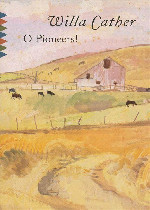
The Odyssey (/ˈɒdəsi/; Greek: Ὀδύσσεια Odýsseia, pronounced [o.dýs.sej.ja] in Classical Attic) is one of two major ancient Greek epic poems attributed to Homer. It is, in part, a sequel to the Iliad, the other work ascribed to Homer. The Odyssey is fundamental to the modern Western canon; it is the second-oldest extant work of Western literature, while the Iliad is the oldest. Scholars believe the Odyssey was composed near the end of the 8th century BC, somewhere in Ionia, the Greek coastal region of Anatolia.

Le pays des fourrures(漂逝的半岛) 立即阅读
L'œuvre est d'abord publiée dans le Magasin d'éducation et de récréation, du 20 septembre 1872 au 15 décembre 1873, puis reprise en volume le 13 novembre 1873 chez Hetzel. En 1859, des officiers de la Compagnie de la Baie d'Hudson sont chargés d'aller fonder un fort au nord du 70e parallèle, au-delà du cercle polaire, dans le Grand Nord Canadien. Le fort est établi sur le cap Bathurst, qui semble être le lieu parfait. Malheureusement, ce cap n'est pas fait de terre mais de glace, et, lors d'une éruption volcanique, le cap se détache du continent et part à la dérive, emportant tous ses occupants avec lui.

Set on the Nebraska prairie where Willa Cather grew up, this powerful early novel tells the story of the young Alexandra Bergson, whose dying father leaves her in charge of the family and of the lands they have struggled to farm. In Alexandra's long flight to survive and succeed, O Pioneers! relates an important chapter in the history of the American frontier. Evoking the harsh grandeur of the prairie, this landmark of American fiction unfurls a saga of love, greed, murder, failed dreams, and hard-won triumph. In the fateful interaction of her characters, Willa Cather compares with keen insight the experiences of Swedish, French, and Bohemian immigrants in the United States. And in her absorbing narrative, she displays the virtuoso storytelling skills that have made her one of the most admired masters of the American novel.